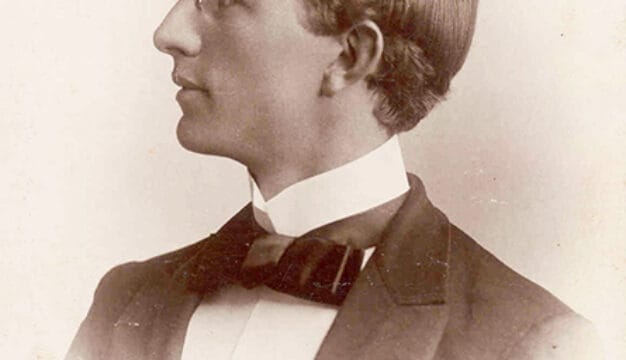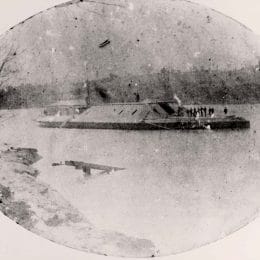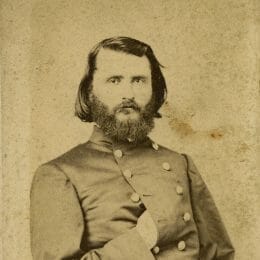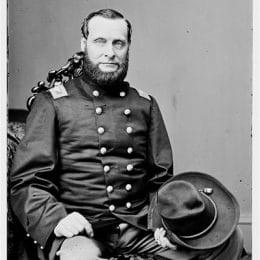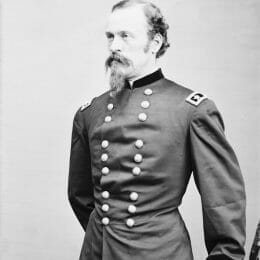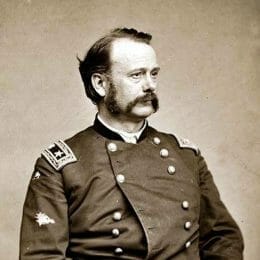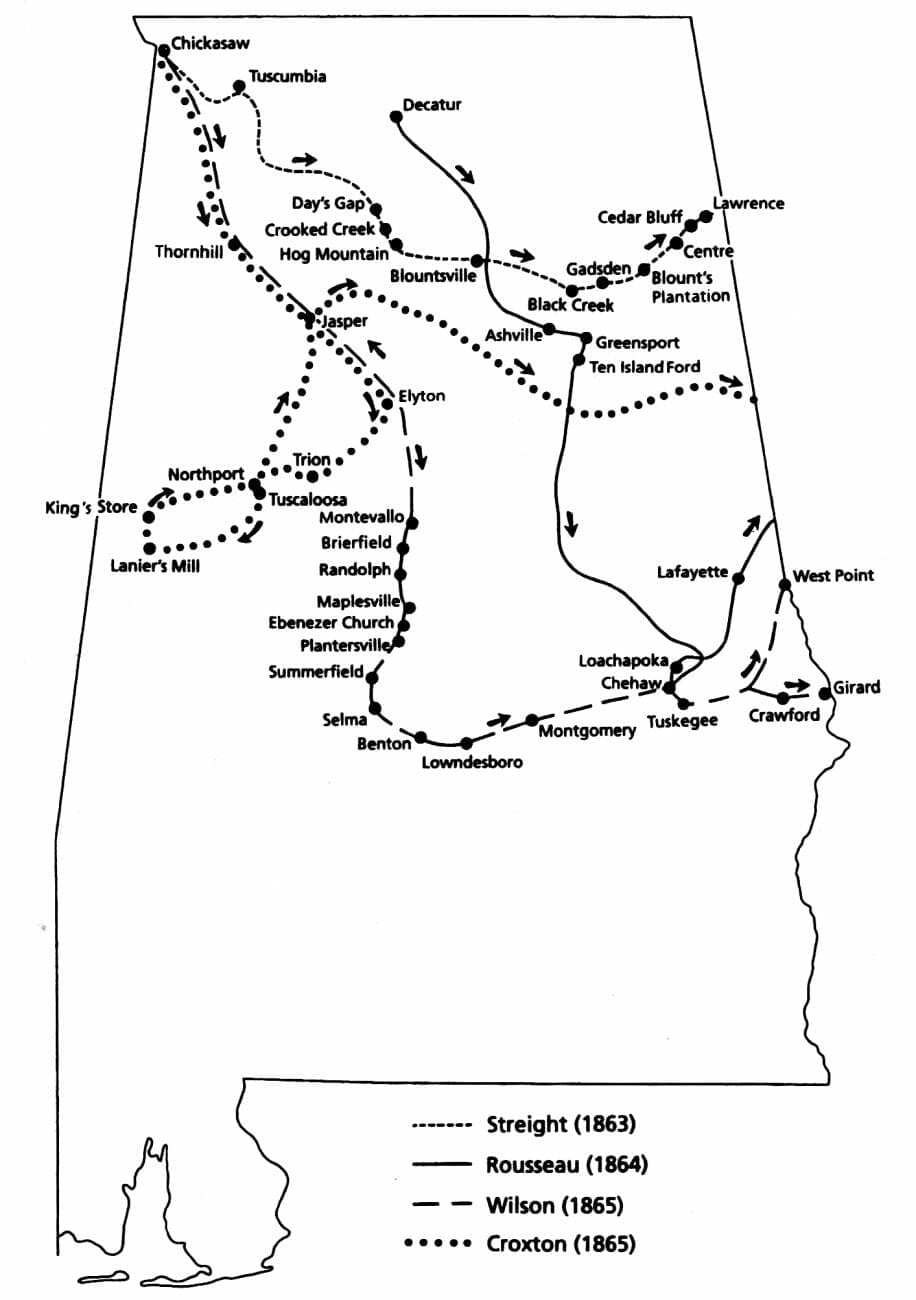Rousseau's Raid
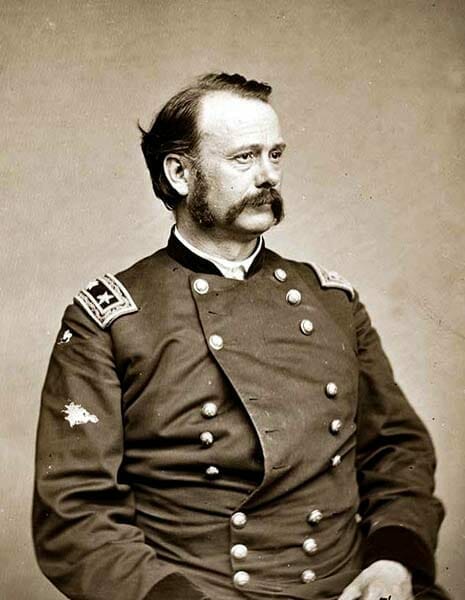 Gen. Lovell Rousseau
Rousseau’s Raid was a series of attacks by U.S. cavalry troops, led by Maj. Gen. Lovell Harrison Rousseau, on sites important to the Confederate war effort in Alabama between July 10 and 22, 1864. The raid began in Decatur, Morgan County, and concluded near Columbus, Georgia. One of several federal cavalry incursions into the state, Rousseau’s was the first into central Alabama and is considered one of the most daring and effective cavalry raids of the American Civil War. The raid achieved its aim of destroying military supplies and disrupting the Montgomery and West Point Railroad around Notasulga and Loachapoka in Macon County and Auburn and Opelika in what is now Lee County. The raid included the Battle of Ten Islands Ford on July 14 and the Battle of Chehaw Station on July 18.
Gen. Lovell Rousseau
Rousseau’s Raid was a series of attacks by U.S. cavalry troops, led by Maj. Gen. Lovell Harrison Rousseau, on sites important to the Confederate war effort in Alabama between July 10 and 22, 1864. The raid began in Decatur, Morgan County, and concluded near Columbus, Georgia. One of several federal cavalry incursions into the state, Rousseau’s was the first into central Alabama and is considered one of the most daring and effective cavalry raids of the American Civil War. The raid achieved its aim of destroying military supplies and disrupting the Montgomery and West Point Railroad around Notasulga and Loachapoka in Macon County and Auburn and Opelika in what is now Lee County. The raid included the Battle of Ten Islands Ford on July 14 and the Battle of Chehaw Station on July 18.
The raid formed part of the U.S. military’s dual offenses, led by Lt. Gen. Ulysses S. Grant and Gen. William T. Sherman, against Richmond, Virginia, and through the middle of the Deep South toward Atlanta, Georgia, respectively. In preparation, Sherman amassed vast reserves of supplies and regrouped nearly 100,000 soldiers scattered across the Western Theater, including those stationed in Huntsville, Madison County. His strategy called for a swift raid by a large cavalry force moving south and then east through the center of Alabama that would systematically destroy the logistically vital railroad connecting Montgomery, Montgomery County, and Atlanta.
Sherman selected Rousseau to lead the strategically important raid through Alabama and outlined the size of the raiding force, route, objectives, and duration. Rousseau, a native of Kentucky, had served in the Indiana and Kentucky legislatures and as a captain in the Mexican-American War (1846-1848) and had already fought in significant Civil War battles at Shiloh, Perryville, Stones River, and Chickamauga. On July 7, Sherman ordered Rousseau to gather 2,500 cavalrymen, 1,000 Spencer rifles, two Parrott guns, and myriad supplies. The raid was to commence at Decatur and then pass through Blountsville, Blount County, and Ashville, St. Clair County. Rousseau and his men were then to destroy the bridge at Ten Islands en route to Talladega, Talladega County, or Oxford, Calhoun County. After crossing the Tallapoosa River, they were to dismantle segments of the railroad between Tuskegee and Opelika by heating the iron rails and twisting them into what would become known as “Sherman’s Neckties.” Montgomery, Opelika, and Columbus, Georgia, were identified as points of strategic importance.
Rousseau selected companies from the Eighth Indiana Cavalry under Col. Thomas J. Harrison, Fourth Tennessee Cavalry under Maj. Meshack Stephens, Second Kentucky Cavalry under Col. Elijah S. Watts, Ninth Ohio Cavalry under Col. William D. Hamilton, and Fifth Iowa Cavalry under Col. Matthewson T. Patrick, as well as a section of the First Michigan Artillery under Lt. Leonard Wightman. He arranged the 2,700 soldiers into two brigades commanded by Harrison and Hamilton. Rousseau’s raiders departed Decatur at noon on July 10, travelled southeast, and halted in Somerville for the night. By July 12, the raid had covered nearly 40 miles across Sand Mountain, through Blountsville and Oneonta, and across Strait Mountain en route to Ashville, where a forward detachment of soldiers from the Fourth Tennessee Cavalry had already occupied the town and confiscated provisions.
On the evening of July 13, the raiders reached the Coosa River at Greensport, where they secured a ferryboat and encountered resistance from outnumbered and poorly equipped Confederate soldiers. A force of 200 cavalrymen crossed the river and travelled southward to meet the bulk of the raiding force, which crossed at the Ten Island’s Ford. A small group of Confederate sharpshooters and cavalry commanded by Brig. Gen. James H. Clanton engaged the raiders for nearly an hour but were overpowered. Clanton’s force suffered 14 dead, 40 wounded, and eight captured, and although Rousseau reported only one wounded soldier, 300 U.S. cavalrymen were declared ineffective or unfit and sent to Guntersville. Rousseau was thus left with a raiding force of approximately 2,400 men.
 Janney Furnace in Ohatchee
On July 14 outside present-day Ohatchee, Capt. Ed Ruger discovered and demolished the Janney Furnace and Cane Creek Iron Works, which supplied Confederate forces. Rousseau ordered the destruction of one of the heavy Parrott guns that was slowing their progress. On July 15, the raiders reached Talladega, where they captured large quantities of food. Prior to departing, the raiders destroyed the depot, railroad cars full of provisions, and two gun factories. Rousseau also pardoned 143 wounded Confederates at the local hospital.
Janney Furnace in Ohatchee
On July 14 outside present-day Ohatchee, Capt. Ed Ruger discovered and demolished the Janney Furnace and Cane Creek Iron Works, which supplied Confederate forces. Rousseau ordered the destruction of one of the heavy Parrott guns that was slowing their progress. On July 15, the raiders reached Talladega, where they captured large quantities of food. Prior to departing, the raiders destroyed the depot, railroad cars full of provisions, and two gun factories. Rousseau also pardoned 143 wounded Confederates at the local hospital.
The raiders then traveled southeast in Talladega County toward Winterboro and Youngsville and reached Stowe’s Ferry along the Tallapoosa River on the evening of July 16. Most of Rousseau’s cavalrymen crossed the river at a ford to the north. The raiders, though exhausted, travelled 30 miles overnight, passing through Dadeville and stopping when they reached Loachapoka, located along the Montgomery and West Point Railroad. The soldiers cut the telegraph wires at the abandoned depot and then rested for a few hours. Rousseau’s cavalrymen had traveled almost 240 miles since departing Decatur.
Rousseau woke his men at ten o’clock in the evening on July 17 to proceed with their primary objective of destroying the railroad. Harrison’s men gathered timbers, crossties, fence posts, and other combustibles into large piles and set them ablaze. They then threw the iron rails upon the fires until they burned red hot and, as instructed, twisted and bent the rails to assure their future uselessness. The abandoned Loachapoka Depot and several other nearby railroad buildings accidentally caught fire during the night, but most of the town was spared from the flames.
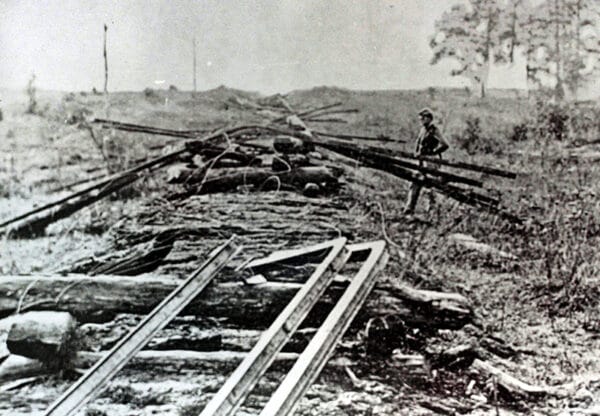 Sherman’s Neckties
By the morning of July 18, the citizens of Montgomery were alerted to the raid and in an uproar. Gov. Thomas H. Watts issued appeals to all available state reserves and citizens for assistance, but the Militia Act of August 1863 had depleted home guard units. Nearly 300 young Confederate soldiers hastily gathered, including 54 cadets from the University of Alabama in Tuscaloosa, Tuscaloosa County, led by Lt. George E. Redwood. They loaded two cannons, horses, caissons, and guns aboard a train and traveled eastward to meet the federal invaders. Meanwhile, Rousseau divided his force into four groups. The Fourth Tennessee Cavalry moved southward toward Chehaw Station to destroy the rail line heading in the direction of Notasulga, and the Eighth Indiana Cavalry traveled to Notasulga and worked to destroy the rail lines south toward Chehaw Station, where a rail line ended at Tuskegee. A third group commanded by Col. Hamilton went to Auburn, and the Second Kentucky Cavalry continued to destroy the railroad between Loachapoka and Notasulga.
Sherman’s Neckties
By the morning of July 18, the citizens of Montgomery were alerted to the raid and in an uproar. Gov. Thomas H. Watts issued appeals to all available state reserves and citizens for assistance, but the Militia Act of August 1863 had depleted home guard units. Nearly 300 young Confederate soldiers hastily gathered, including 54 cadets from the University of Alabama in Tuscaloosa, Tuscaloosa County, led by Lt. George E. Redwood. They loaded two cannons, horses, caissons, and guns aboard a train and traveled eastward to meet the federal invaders. Meanwhile, Rousseau divided his force into four groups. The Fourth Tennessee Cavalry moved southward toward Chehaw Station to destroy the rail line heading in the direction of Notasulga, and the Eighth Indiana Cavalry traveled to Notasulga and worked to destroy the rail lines south toward Chehaw Station, where a rail line ended at Tuskegee. A third group commanded by Col. Hamilton went to Auburn, and the Second Kentucky Cavalry continued to destroy the railroad between Loachapoka and Notasulga.
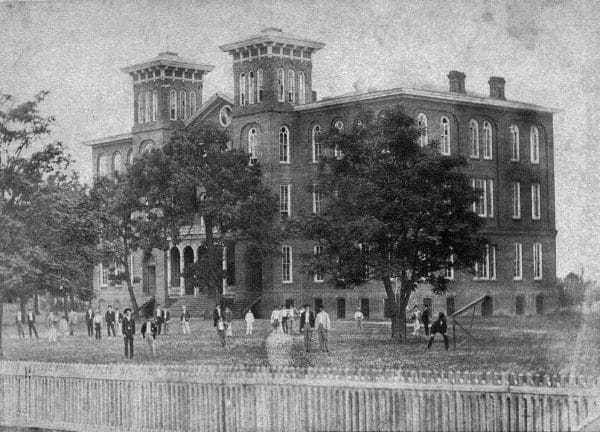 Old Main
In Auburn, an ill-equipped Confederate force of 18 convalescents from the Texas Confederate Hospital, established in the Old Main building (replaced after a fire by present-day Samford Hall) on the campus of the East Alabama Male College (now Auburn University), attempted to repel the Ninth Ohio Cavalry. Following a brief engagement, the Auburn defenders retreated as federal soldiers burned lumber, quartermaster, and commissary supplies at Auburn Station and destroyed three miles of track north of town.
Old Main
In Auburn, an ill-equipped Confederate force of 18 convalescents from the Texas Confederate Hospital, established in the Old Main building (replaced after a fire by present-day Samford Hall) on the campus of the East Alabama Male College (now Auburn University), attempted to repel the Ninth Ohio Cavalry. Following a brief engagement, the Auburn defenders retreated as federal soldiers burned lumber, quartermaster, and commissary supplies at Auburn Station and destroyed three miles of track north of town.
The Confederates on the train from Montgomery encountered Rousseau’s raiders just past Uphaupee Creek and engaged them in what became known as the Battle of Chehaw Station. The Confederate forces, on a hill behind a substantial rail fence, fired upon the federal cavalrymen commanded by Maj. Harlon Baird of the Fifth Iowa Cavalry. A small group of mounted Confederate militiamen from Tuskegee joined the skirmish. Shortly after noon, the Eighth Indiana Cavalry arrived with the repeating Spencer rifles and led a frontal assault against the Confederate line. The outnumbered and largely inexperienced Confederate soldiers retreated toward Loachapoka. Rousseau’s cavalrymen formed a rear guard, and the rest of the men continued their objective of destroying the railroad toward Notasulga.
The raiders spent the evening of July 18 vigorously dismantling the railroad tracks. Additionally, they destroyed Camp Watts, a Confederate hospital, barracks, and depot two miles west of Notasulga, as well as a large quantity of tents and quartermaster supplies. The following morning, Rousseau divided his forces again. One group continued destroying the railroad toward Notasulga, and another focused its attention on two miles of track in the direction of Columbus. Rousseau ordered a third group to demolish the depot and railroad switches at Opelika before advancing towards West Point. Around noon on July 19, Rousseau’s raiders gathered about a mile north of Opelika. They travelled northward through LaFayette, Chambers County, and halted for the night. Over the next two days, they entered Georgia, passing through Carrollton and Villa Rica before stopping at Powder Springs on July 22.
Rousseau reported that his men had destroyed more than 30 miles of railroad track along with a number of trestle bridges, stations, buildings, and depots as well as vast quantities of cotton and commissary goods at Opelika, Auburn, Loachapoka, and Notasulga. The extremely efficient U.S. cavarly force suffered only 50 men killed or captured. The raid halted service along the Montgomery and West Point Railroad for nearly a month, during which the Battles of Peachtree Creek, Atlanta, and Ezra Church, as well as most of the siege of Atlanta occurred without the supplies that the rail line would have carried.
After the war, Rousseau returned to politics and was elected to the House of Representatives from Kentucky in March 1865; in Congress, his commitment to reconciliation with the former Confederacy would lead to conflicts with Radical Republicans during Reconstruction. Historical markers in Lee County and Tallapoosa County commemorate Rousseau’s Raid through central Alabama. Additionally, on April 28, 1893, the United Daughters of the Confederacy unveiled a monument in Auburn’s Pine Hill Cemetery in memory of the soldiers who died at the hospital. The Battle of Ten Islands Ford is commemorated at Ten Islands Historical Park on H. Neely Henry Lake in Ragland, St. Clair County.
Further Reading
- Bearss, Edwin C. “Rousseau’s Raid on the Montgomery and West Point Railroad.” Alabama Historical Quarterly 25 (Spring/Summer 1963): 7-48.
- Evans, David. Sherman’s Horsemen: Union Cavalry Operations in the Atlanta Campaign. Bloomington: Indiana University Press, 1996.
- Noe, Kenneth W., ed. The Yellowhammer War: The Civil War and Reconstruction in Alabama. Tuscaloosa: University of Alabama Press, 2013.
- Smith, Benjamin G. The War With the South: A History of the Late Rebellion with Biographical Sketches of Leading Statesmen and Distinguished Naval and Military Commanders, etc. New York: Virtue & Yorston, 1867.



